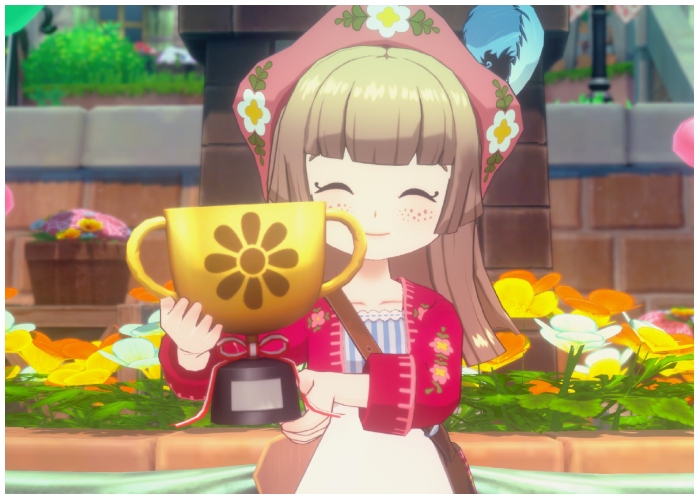In a gaming world long dominated by fast-paced action and competitive intensity, a softer, quieter genre is taking center stage: cozy games. These gentle, stress-free experiences prioritize relaxation, creativity, and emotional comfort over winning. And in a time marked by burnout, digital fatigue, and societal pressure, more people are turning to cozy games not just to escape, but to heal.
What Are Cozy Games, Exactly?
Cozy games are defined by their low-stakes gameplay, soothing aesthetics, and emotionally uplifting themes. Think Animal Crossing, Stardew Valley, or Disney Dreamlight Valley. Instead of racing against the clock or battling enemies, players engage in activities like farming, crafting, fishing, decorating, or forming friendships with NPCs.
These games tend to have soft color palettes, calming soundtracks, and a leisurely pace that invites players to relax. There’s no rush to complete objectives. Progress is optional. The vibe is everything.
A Shift in What Gamers Want
Part of the rise in cozy games can be traced to pandemic-era habits. In 2020, titles like Animal Crossing: New Horizons became cultural phenomena as people sought comfort and connection during lockdown. But even post-pandemic, the trend hasn’t faded. It’s only grown.
More gamers—especially millennials and Gen Z—are drawn to games that offer emotional comfort and a sense of routine. In a world that feels increasingly chaotic, cozy games provide a sense of order, agency, and peace. They’re not about adrenaline; they’re about joy.
Mental Health Meets Game Design
Cozy games often intersect with themes of mindfulness and emotional well-being. Whether it’s cultivating a tranquil garden or chatting with friendly villagers, these games promote calmness and reflection. They allow players to slow down, make intentional choices, and experience progress without pressure.

Some developers are even intentionally designing cozy games as therapeutic tools. Titles like Spiritfarer and Unpacking explore grief, healing, and identity in ways that are both gentle and profound. It’s a growing space for emotionally intelligent storytelling.
The Aesthetic of Escape
Unlike traditional games that simulate war zones or competitive arenas, cozy games offer immersive worlds designed for safe escape. They’re visually pleasing, sometimes nostalgic, and often laced with whimsy. Think pastel sunsets, soft-spoken characters, and musical cues that feel like lullabies.
This aesthetic isn’t just about visuals. It taps into a psychological need for sanctuary. When real life feels heavy, cozy games become a digital version of curling up with a warm blanket and a good book.
A Diverse, Growing Audience
One of the most interesting parts of the cozy game trend is how it’s reshaping the gaming demographic. These games attract people who wouldn’t normally identify as gamers. Many women, older adults, and people with anxiety or neurodivergence find cozy games accessible and rewarding.
They offer play without pressure, community without competitiveness, and storytelling without conflict. In doing so, they challenge the notion that gaming has to be about winning or being the best.
From Niche to Mainstream
What was once a niche category is now drawing major industry attention. Cozy game showcases are gaining popularity on Twitch and YouTube. Indie developers are leading the charge, but major publishers are starting to take notice. Nintendo and Xbox have both featured cozy titles prominently in recent years.
Gaming influencers and streamers are also helping normalize cozy gaming. By highlighting moments of calm and joy, they’re shifting the cultural narrative around what gaming can be.
The Rise of Cozy Game Communities
Another reason cozy games are thriving is the welcoming communities forming around them. Reddit forums, Discord groups, and streaming channels have sprung up around cozy titles, creating spaces for fans to share tips, artwork, and personal stories. These communities are often inclusive, supportive, and refreshingly free from toxic behavior commonly seen in more competitive gaming environments.
This social aspect enhances the experience and makes players feel like they belong to something meaningful. Whether it’s a group of fans discussing their Stardew Valley farm layouts or organizing in-game events, the sense of shared calm and creativity strengthens the genre’s appeal.
The Future of Cozy Gaming
As demand grows, so does innovation within the genre. Developers are blending cozy aesthetics with other genres—cozy horror, cozy puzzle, cozy mystery. This hybridization is expanding what cozy can mean while still preserving its core values of calm, comfort, and creative play.
With increased attention to mental health, digital balance, and slow living, cozy games are positioned to remain a staple in the gaming ecosystem. They’re not just a trend—they’re a redefinition of why we play. In a world obsessed with hustle, cozy games invite us to pause. They remind us that rest is valuable, that play can be gentle, and that joy doesn’t have to come from winning. Sometimes, joy looks like planting virtual turnips or arranging pixelated bookshelves—and that’s more than enough.